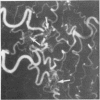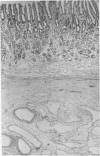Abstract
Vascular anomalies of the gastrointestinal tract are an important source of both acute and chronic blood loss. They present difficult management problems as they are often multiple, involving more than one part of the gastrointestinal tract, and may give rise to bleeds of increasing frequency and severity over a period of many years. We present the results of endoscopic argon and Nd YAG laser treatment of 18 patients with documented recurrent, severe haemorrhage from vascular lesions of the upper gastrointestinal tract with follow up of up to five years. Four patients with hereditary haemorrhagic telangiectasia, five with single angiodysplasias and three with multiple angiodysplasias have had their transfusion requirements reduced to minimal levels after one or more courses of laser treatment. Two of these have required no blood for over two years despite previous total requirements of 52 and 129 units of blood. Four patients were submitted to surgery (two in whom the laser failed to control haemorrhage and two who did not have immediate access to laser therapy at the time of severe bleed). Two of these, however, bled again soon afterwards. Two patients are still undergoing courses of laser therapy although have already shown reductions in transfusion requirements. Both lasers were effective. The Nd YAG laser appears to produce better long term results as its greater penetration makes it possible to ablate the main areas of vascular ectasia in the submucosa, although it does have a slightly higher risk of causing haemorrhage in the first few days after treatment.
Full text
PDF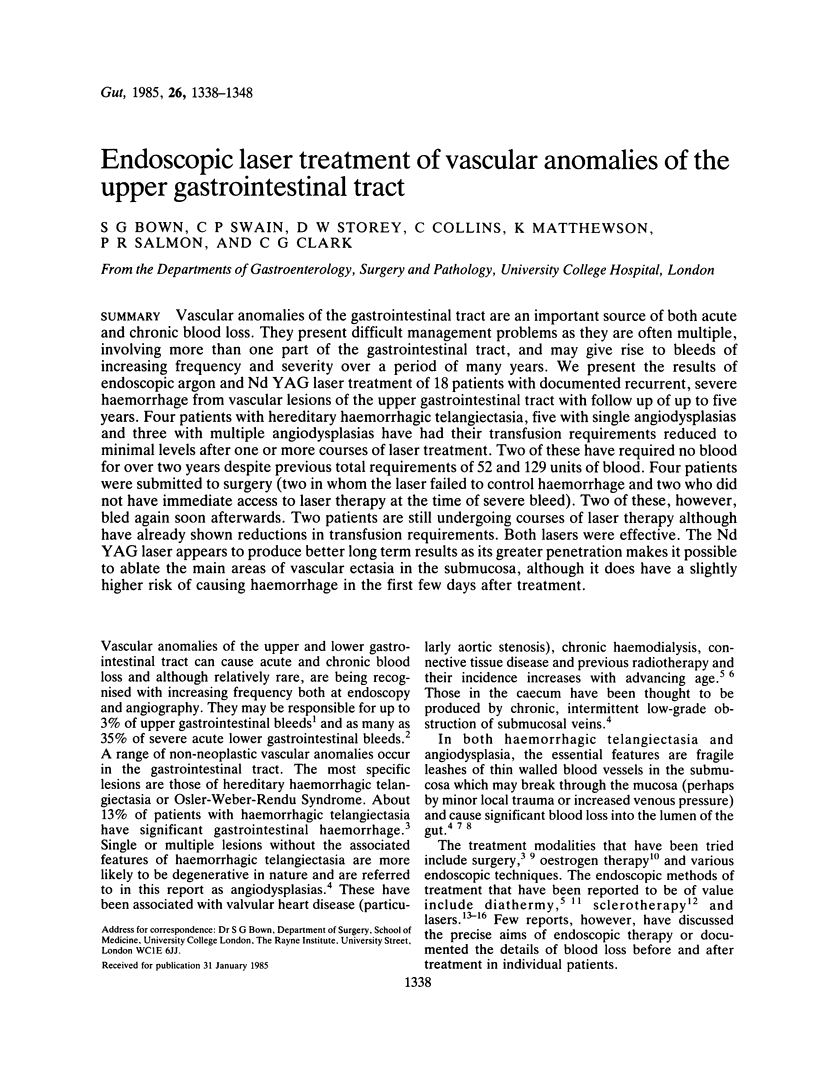
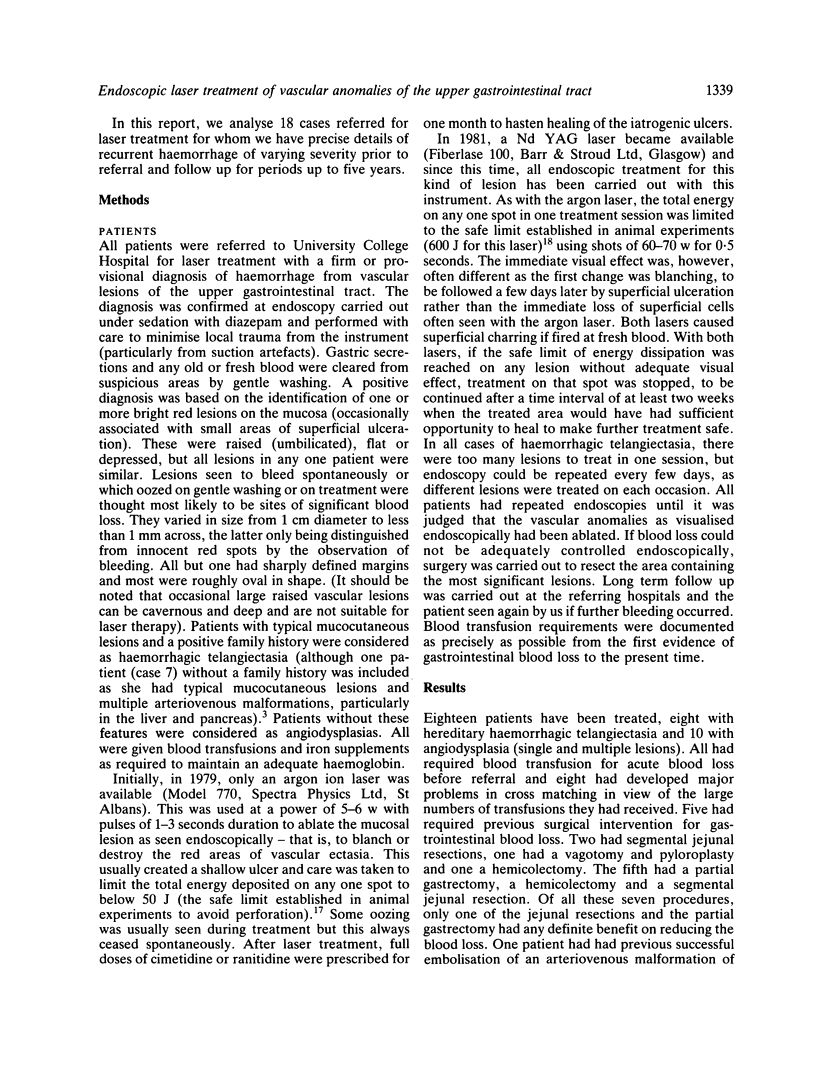
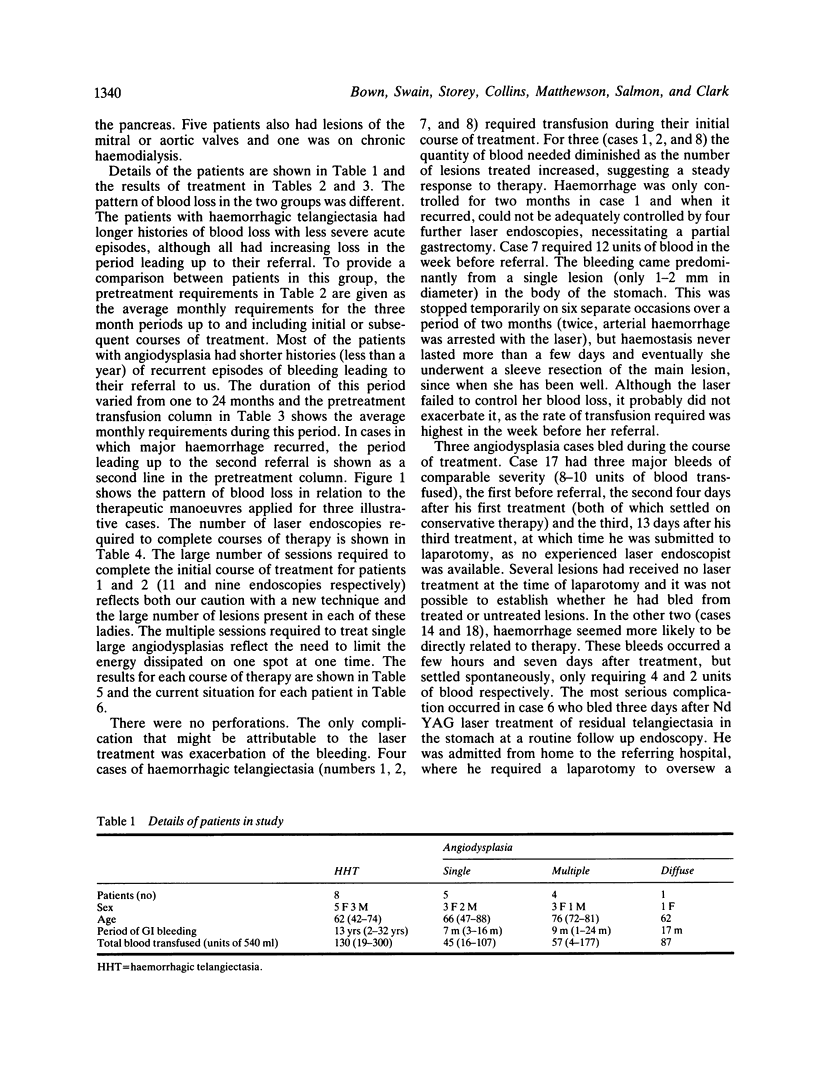
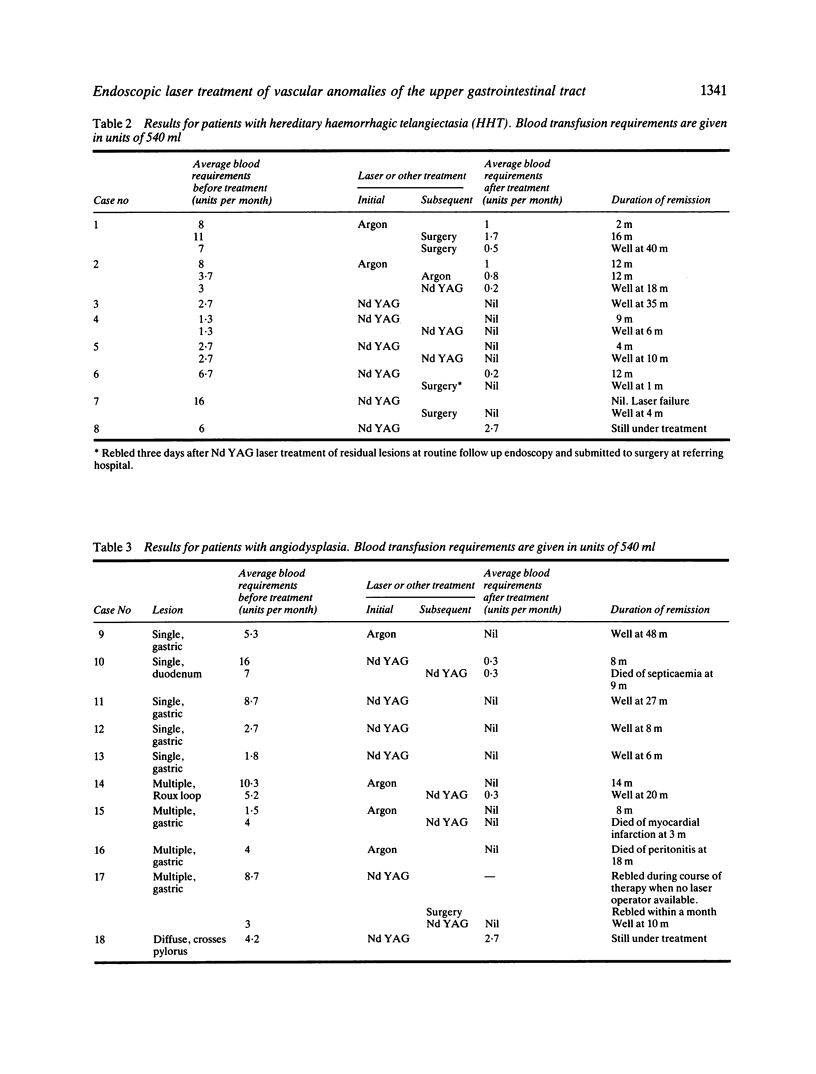
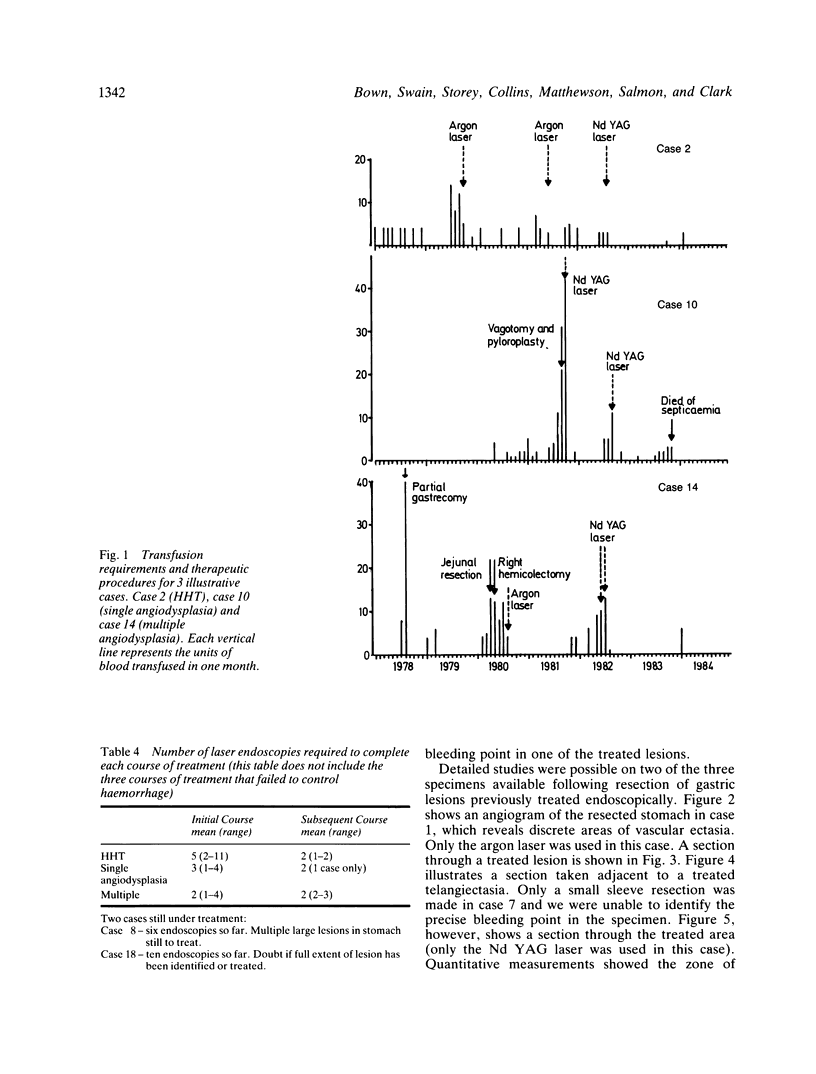
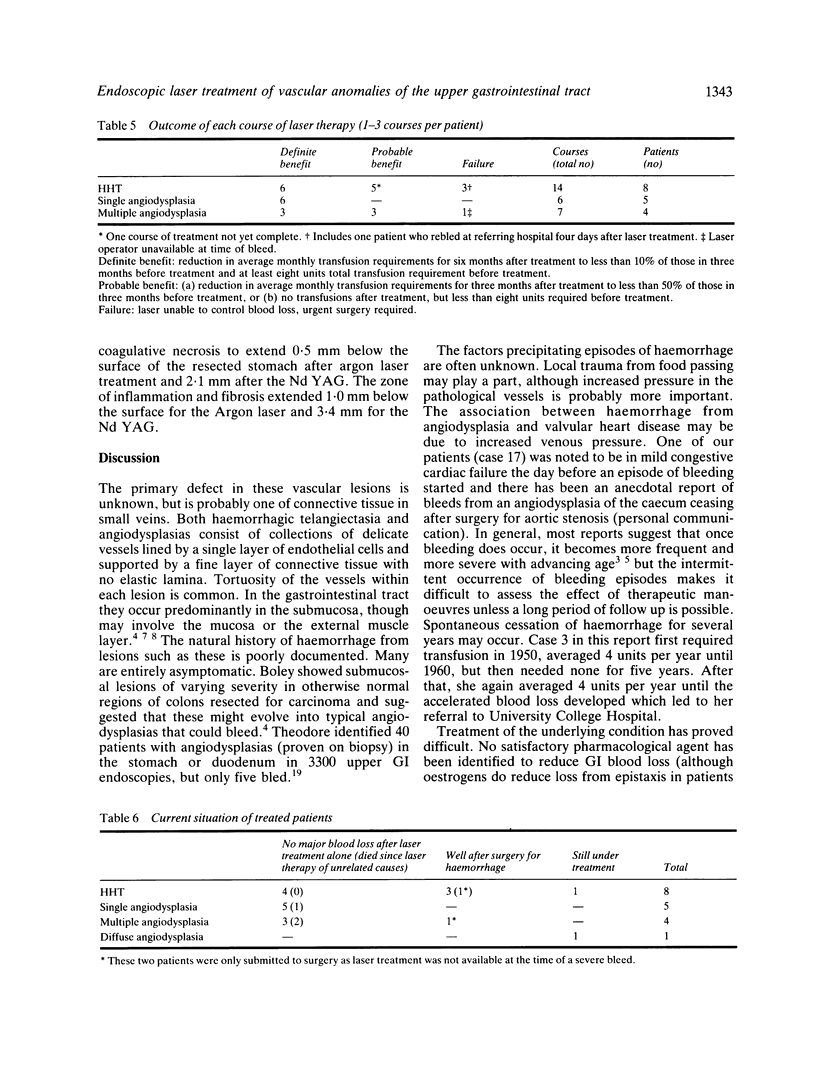
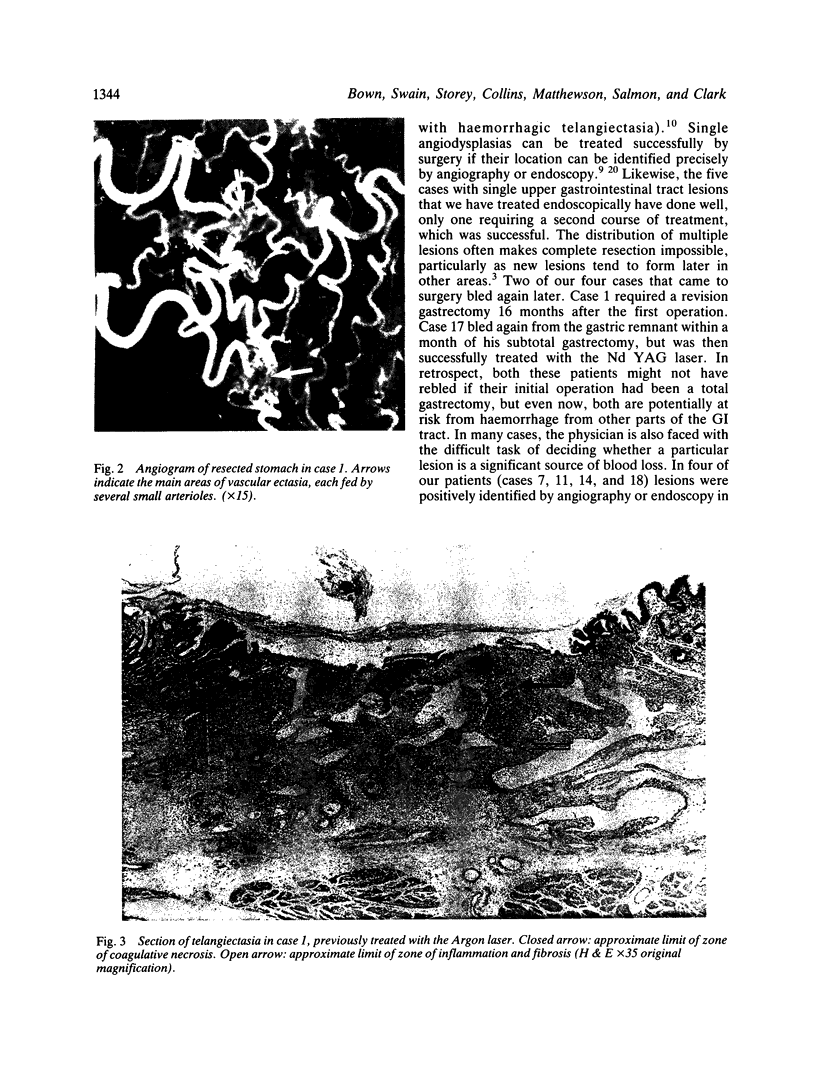
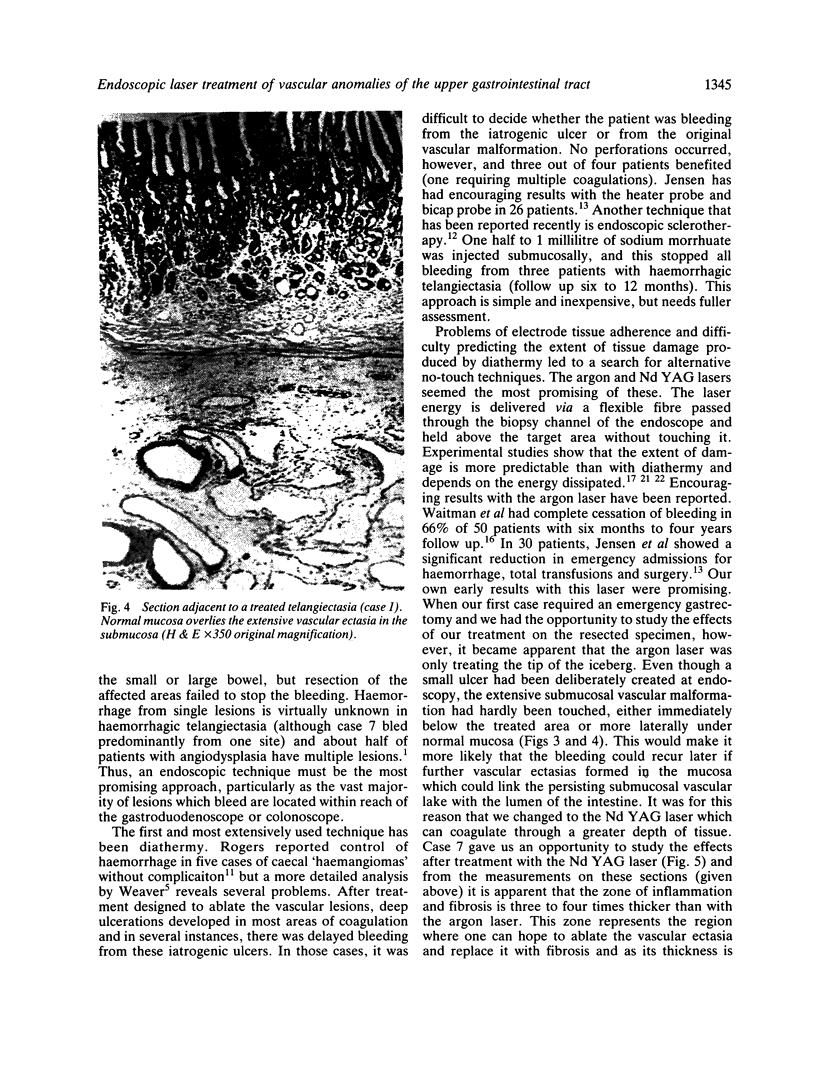
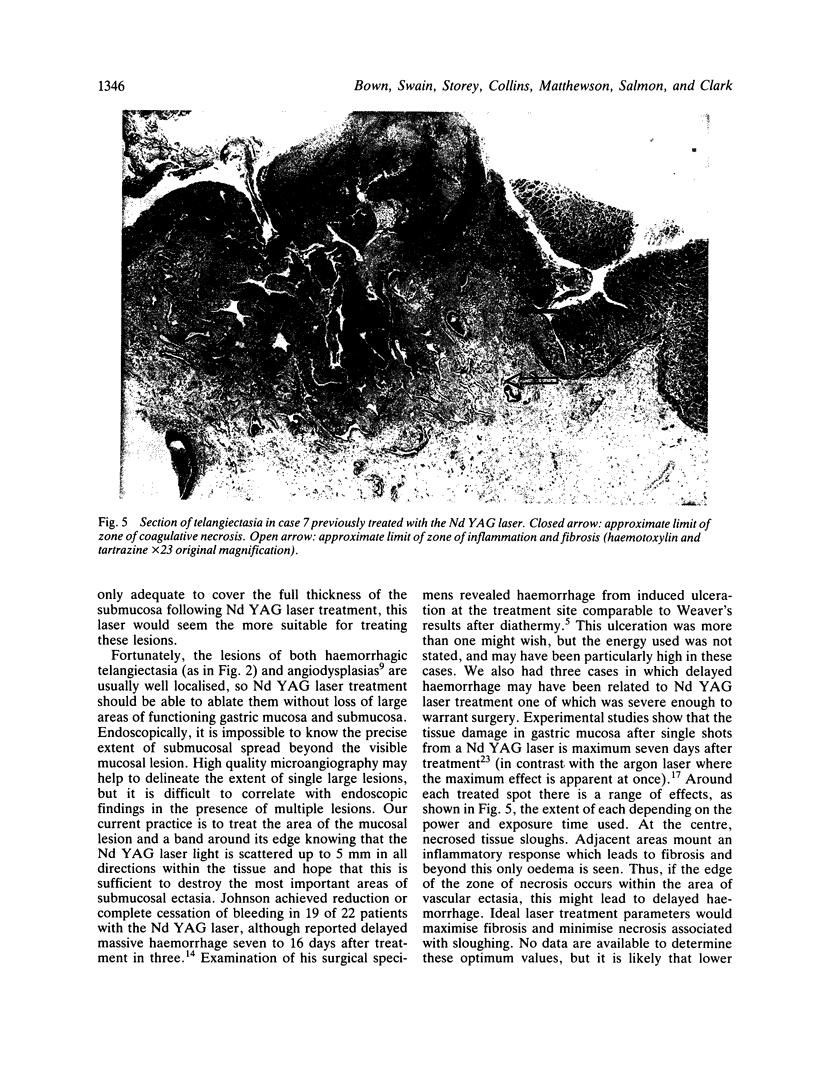
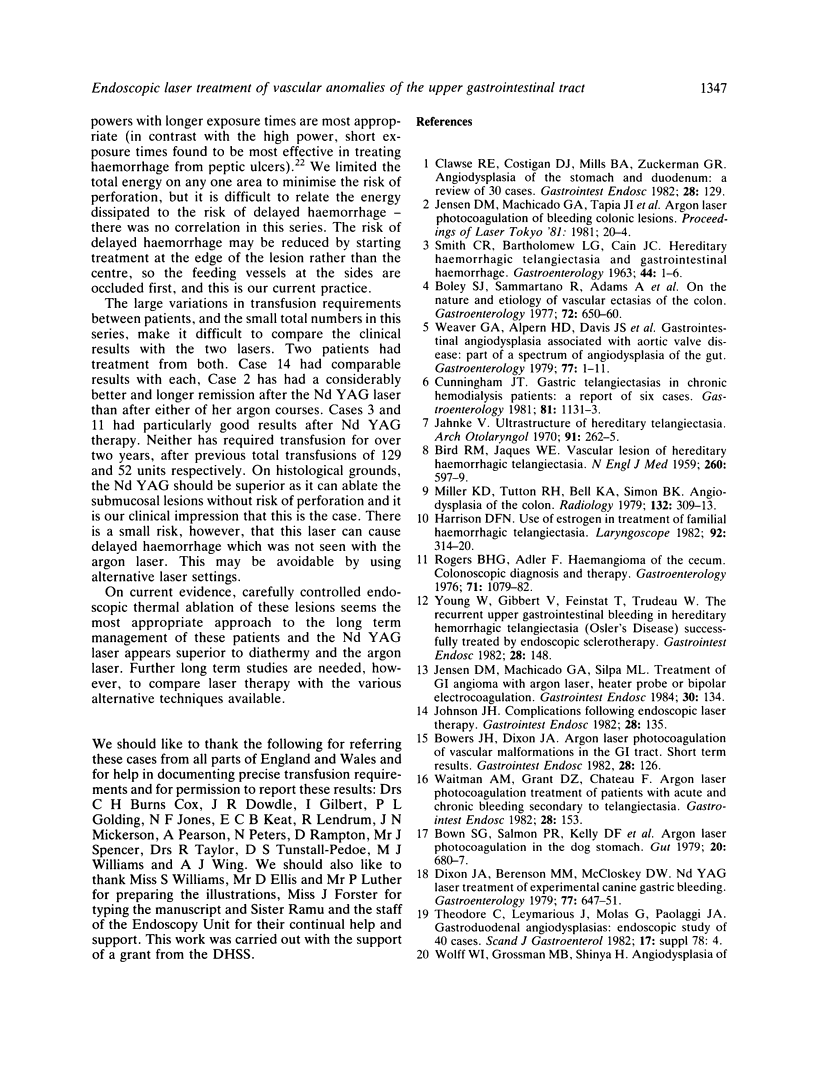

Images in this article
Selected References
These references are in PubMed. This may not be the complete list of references from this article.
- BIRD R. M., JAQUES W. E. Vascular lesion of hereditary hemorrhagic telangiectasia. N Engl J Med. 1959 Mar 19;260(12):597–599. doi: 10.1056/NEJM195903192601206. [DOI] [PubMed] [Google Scholar]
- Boley S. J., Sammartano R., Adams A., DiBiase A., Kleinhaus S., Sprayregen S. On the nature and etiology of vascular ectasias of the colon. Degenerative lesions of aging. Gastroenterology. 1977 Apr;72(4 Pt 1):650–660. [PubMed] [Google Scholar]
- Bown S. G., Salmon P. R., Kelly D. F., Calder B. M., Pearson H., Weaver B. M., Read A. E. Argon laser photocoagulation in the dog stomach. Gut. 1979 Aug;20(8):680–687. doi: 10.1136/gut.20.8.680. [DOI] [PMC free article] [PubMed] [Google Scholar]
- Bown S. G., Salmon P. R., Storey D. W., Calder B. M., Kelly D. F., Adams N., Pearson H., Weaver B. M. NdYAG laser photocoagulation in the dog stomach. Gut. 1980 Oct;21(10):818–825. doi: 10.1136/gut.21.10.818. [DOI] [PMC free article] [PubMed] [Google Scholar]
- Cunningham J. T. Gastric telangiectasias in chronic hemodialysis patients: a report of six cases. Gastroenterology. 1981 Dec;81(6):1131–1133. [PubMed] [Google Scholar]
- Dixon J. A., Berenson M. M., McCloskey D. W. Neodymium-yag laser treatment of experimental canine gastric bleeding. Acute and chronic studies of photocoagulation, penetration, and perforation. Gastroenterology. 1979 Oct;77(4 Pt 1):647–651. [PubMed] [Google Scholar]
- Harrison D. F. Use of estrogen in treatment of familial hemorrhagic telangiectasia. Laryngoscope. 1982 Mar;92(3):314–320. doi: 10.1288/00005537-198203000-00017. [DOI] [PubMed] [Google Scholar]
- Jahnke V. Ultrastructure of hereditary telangiectasia. Arch Otolaryngol. 1970 Mar;91(3):262–265. [PubMed] [Google Scholar]
- Kelly D. F., Bown S. G., Calder B. M., Pearson H., Weaver B. M., Swain C. P., Salmon P. R. Histological changes following Nd YAG laser photocoagulation of canine gastric mucosa. Gut. 1983 Oct;24(10):914–920. doi: 10.1136/gut.24.10.914. [DOI] [PMC free article] [PubMed] [Google Scholar]
- Miller K. D., Jr, Tutton R. H., Bell K. A., Simon B. K. Angiodysplasia of the colon. Radiology. 1979 Aug;132(2):309–313. doi: 10.1148/132.2.309. [DOI] [PubMed] [Google Scholar]
- Protell R. L., Gilbert D. A., Silverstein F. E., Jensen D. M., Hulett F. M., Auth D. C. Computer-assisted electrocoagulation: bipolar vs. monopolar in the treatment of experimental canine gastric ulcer bleeding. Gastroenterology. 1981 Mar;80(3):451–455. [PubMed] [Google Scholar]
- Rogers H. G., Adler F. Hemangiomas of the cecum. Colonoscopic diagnosis and therapy. Gastroenterology. 1976 Dec;71(6):1079–1082. [PubMed] [Google Scholar]
- SMITH C. R., Jr, BARTHOLOMEW L. G., CAIN J. C. Hereditary hemorrhagic telangiectasia and gastrointestinal hemorrhage. Gastroenterology. 1963 Jan;44:1–6. [PubMed] [Google Scholar]
- Weaver G. A., Alpern H. D., Davis J. S., Ramsey W. H., Reichelderfer M. Gastrointestinal angiodysplasia associated with aortic valve disease: part of a spectrum of angiodysplasia of the gut. Gastroenterology. 1979 Jul;77(1):1–11. [PubMed] [Google Scholar]
- Wolff W. I., Grossman M. B., Shinya H. Angiodysplasia of the colon: diagnosis and treatment. Gastroenterology. 1977 Feb;72(2):329–333. [PubMed] [Google Scholar]



